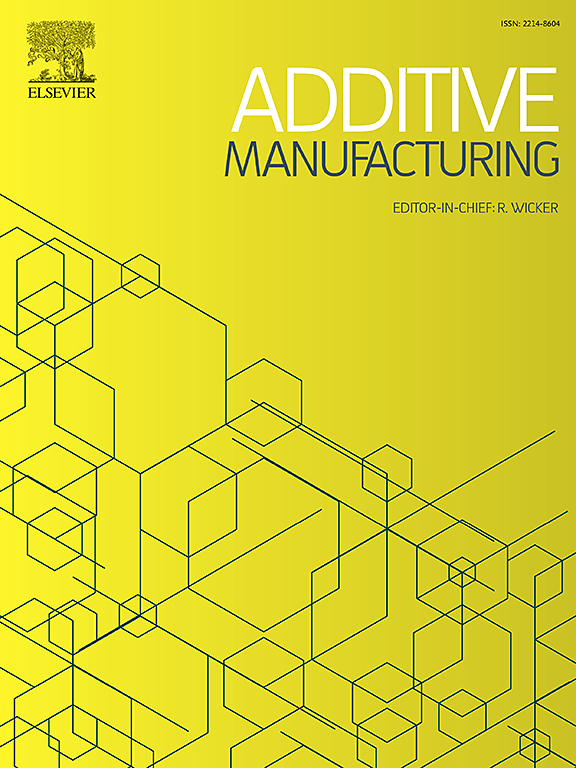Multiphysics modelling of 3D concrete printing: From material model to process simulation and optimisation
IF 11.1
1区 工程技术
Q1 ENGINEERING, MANUFACTURING
引用次数: 0
Abstract
Predictive simulation of 3D concrete printing is important to warrant printability and durability of print pieces and to optimise printing parameters, yet tedious due to the complexity of the material behaviour and printing process. From a constitutive model allowing a continuous description of the coupled chemo-thermo-poro-mechanical behaviour of cement-based materials from the early-age to the hardened state, a comprehensive finite element simulation framework is designed. It aims at modelling extrusion-based 3D printing processes, taking into account the sequential deposition of material. Study of the onset of plastic collapse on specific geometries at different printing speeds show the complexity of collapse prediction as well as the importance of process-related effects. An optimisation scheme is proposed to determine optimal printing speed modulations from numerical simulations with the perspective of increasing productivity in 3D concrete printing. The model shows good predicting capabilities when compared with experimental printing failures, and is able to extrapolate to other accelerator dosages without model re-calibration.
3D混凝土打印的多物理场建模:从材料模型到过程模拟和优化
3D混凝土打印的预测模拟对于保证打印件的可打印性和耐用性以及优化打印参数非常重要,但由于材料性能和打印过程的复杂性而繁琐。从本构模型可以连续描述水泥基材料从早期到硬化状态的耦合化学-热-孔隙-力学行为,设计了一个全面的有限元模拟框架。它旨在模拟基于挤压的3D打印过程,考虑到材料的顺序沉积。对特定几何形状在不同印刷速度下塑性塌陷的研究表明了塌陷预测的复杂性以及工艺相关影响的重要性。从提高3D混凝土打印生产率的角度出发,提出了一种优化方案来确定最佳的打印速度调制。与实验打印失败相比,该模型显示出良好的预测能力,并且可以外推到其他加速器剂量而无需重新校准模型。
本文章由计算机程序翻译,如有差异,请以英文原文为准。
求助全文
约1分钟内获得全文
求助全文
来源期刊

Additive manufacturing
Materials Science-General Materials Science
CiteScore
19.80
自引率
12.70%
发文量
648
审稿时长
35 days
期刊介绍:
Additive Manufacturing stands as a peer-reviewed journal dedicated to delivering high-quality research papers and reviews in the field of additive manufacturing, serving both academia and industry leaders. The journal's objective is to recognize the innovative essence of additive manufacturing and its diverse applications, providing a comprehensive overview of current developments and future prospects.
The transformative potential of additive manufacturing technologies in product design and manufacturing is poised to disrupt traditional approaches. In response to this paradigm shift, a distinctive and comprehensive publication outlet was essential. Additive Manufacturing fulfills this need, offering a platform for engineers, materials scientists, and practitioners across academia and various industries to document and share innovations in these evolving technologies.
 求助内容:
求助内容: 应助结果提醒方式:
应助结果提醒方式:


